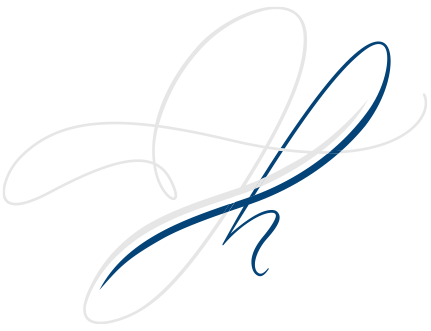Junghye Han (Eileen Han)
Art criticism
현대자수의 새로운 지평에 서다.
자수예술이 새로운 조명을 받고 있다. 자수 현대화의 주역이기도 한 자수회화작가 한정혜.
자수의 현대화는 대체로 자수와 회화의 조합이며, 그 일반적 양상은 상호 보완적인 것이 대세이다. 특이하게도 그는 그림을 독립적으로 그리는 두 트랙의 작업을 하고 있다.
그의 회화적 화면은 아크릴을 이용한 발묵이나 파묵 같은 효과에 기반한 단순하면서도 몽환적이고 감미로운 추상양식을 기본으로 하고 있다.
이름하여 ‘무언의 노래(無言歌)’라는 주제 그대로 굳이 번거로운 설명이 없어도 직관적으로 통하는 그림이다. 그의 자수페인팅은 엄밀히 보면 그림은 그림대로, 자수는 자수대로 완성도를 가지는 두 트랙의 결과물이다.
다시 말하자면 그림은 그림대로 완성도 있는 그림을 오래 전부터 그려 왔고, 자수야 경지에 올라 있으며 자연스럽게 병행할 수 있었다. 따라서 자수가 결합될 때와 그렇지 않을 때의 그림은 형식이나 밀도를 달리한다.
퓨전이나 하이브리드의 시대에 그 어떤 무차별적 결합도 허용된다지만, 그로 인해 산만해질 수도 있다. 그러한 현실을 목격하고 있는 작가는 오랜 경륜과 내공의 안목으로 둘의 결합을 상당히 조심스럽게 타진해 왔다.
작가의 기본 화면은 물맛을 살리는 아크릴 추상으로서, 그림에 대한 감각이나 표현력이 노련하고 군더더기 없이 펼쳐진다. 어찌 보면 그의 그림은 자수와 대조적인 면이 많다.
집중력을 필요로 하는 엄밀함과 느림의 상징인 자수의 자유롭고 충동적인 보상적 표현이란 지극히 자연스러운 일로 보인다. 회화적 표현 자체는 안개가 자욱한 풍경의 운치를 느끼며 시적 감흥을 느낄 수 있는 완성도를 감안하면,
다른 요소를 결합시킨다는 것이 사족일 수 있다는 점에서 조심스러운 일이 아닐 수 없다. 물론 이에 자수가 결합되는 경우, 작가는 자신의 꿈결 같은 운치 가득한 화면에 독특한 선맛의 드로잉을 무대에 올리듯 등장시킨다.
작가가 스티치 드로잉(stitch drawing)을 통해 구현하는 소재는 나비이다. 나비 소재는 작가에게 몇 가지 중의적인 것들이 집약된 것으로 파악된다. 공간을 자유롭게 나는 실재이면서도 가상을 넘나드는 나비의 이미지는
자연, 혹은 영혼의 상징으로서 배경의 페인팅과 상호작용하면서 의미가 달라지기도 한다. 사실 자수는 조형으로서만이 아니고 산업에서도 폭넓게 활용되고 있다.
그럼에도 불구하고 많은 아티스트들이 기계에 의존하지 않고 직접 손으로 제작하는 전통적 방식을 선호한다. 그 이유는 무엇 때문일까.
대부분의 예술가들이 디지털 기술을 활용할지언정 할 수만 있으면 손 혹은 신체에 의한 ‘창작주권’을 포기하고 싶어 하지 않는다.
예술가에게 손과 연장은 신체의 일부가 아니라 곧 체화(體化)된 미의식이기 때문이다.
시대는 다양한 카테고리들이 자유롭게 수평적으로 통섭됨으로써 문화적 우성(優性) 인자를 갖는 교배종을 양산하고 있다.
작가는 이 우세종의 브리더인 셈이다. 이러한 문화적 우세종이야말로 장차 세계무대 내 K-Art의 견인차로 발전시켜야 한다.
한정혜, 이 전환기의 주역으로 기억될 것이다.
이 재 언 (미술평론가)
Standing on a new horizon of modern embroidery
Embroidery art is receiving new light.
Junghye Han, an embroidery painter, plays a leading role in the modernization of embroidery. The modernization of embroidery is generally a combination of embroidery and painting which complement one another. Artist sets a simple yet dreamlike abstract background layered with gradation of acrylic paint. As the theme being called ‘Moo-Un-Ga(songs without words)’, the painting itself communicates intuitively and requires no further explanation.
Strictly speaking, her embroidery painting is the result of the completeness of both painting and embroidery. Her devotion in painting and her profession in embroidery naturally made it possible for her to create this new form of artwork. Therefore, the presence of embroidery differs the form and the density of her work. Any form of combination can be allowed in the age of hybrid; though it is hard to avoid distraction. However, Han, based on her profession and skill, has perceived the reality and has been very careful about combining the two.
The watery abstract background of the artwork unfolds the sense of art and expressiveness. In a way, her paintings contrast with embroidery. Work of Embroidery requires concentration and patience. On the contrary, the background is created freely and impulsively. Considering the perfection of the poetic and misty background, combining other elements could have been prudential. However, Han artistically presents her unique work of embroidery on her dreamy background.
The artist illustrates her theme ‘butterfly’ through stitch drawing. Butterflies are understood to be a collection of several ambivalent things to the artist. The image of the butterfly, which could symbolize the nature or the soul, changes its meaning as it interacts with the background.
Embroidery is widely used not only in artworks but also in industry. Nevertheless, many artists prefer the traditional method of stitching by hand rather than relying on machines. What could be the reason? They still want to maintain their 'creative sovereignty' by hand-creating their artwork. This is because their hands and tools are not just a part of the body, but an embodied sense of aesthetics.
As various categories freely combine together, this era produces hybrids with cultural dominance. Han is the breeder of this dominant species and should be developed as a driving force for K-Art.
Junghye Han will be remembered as the leader in this transitional period.
Jae-eon Lee (Art Critic)
